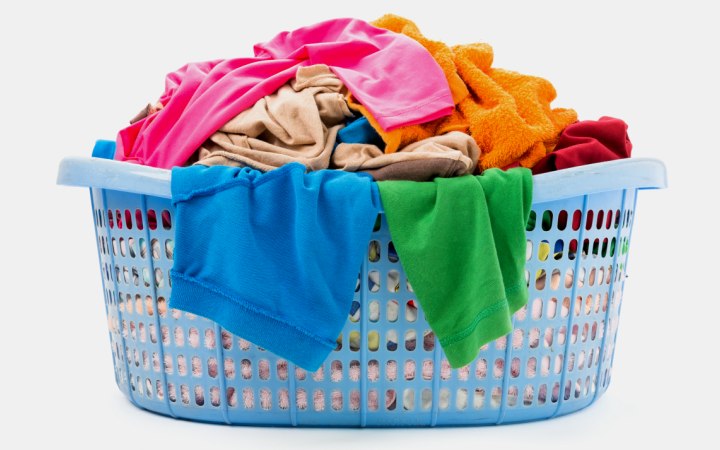Doing Laundry (2)

Previous Page
Dark and Colorfast Bold colors: These include washable silks, rayons, and delicate synthetic fabrics, such as lightweight synthetic blouses and shirts, lingerie and hosiery.
Light and Pastel colors: These include washable silks, rayons, and delicate synthetic fabrics, such as lightweight synthetic blouses and shirts, lingerie and hosiery.
Linens:
These are items that typically serve more utility functions and generally need thorough cleaning. Use either normal or heavy wash cycles depending on the level of soil.
Whites and Pastels: This is by far the largest category of washables. It includes most bedding and bed linens, towels, most cotton undergarments for men and women.
Step Two: Preparing the Wash
After youíve separated the laundry into loads, you need to properly prepare the wash for laundering. At this point you pre-treat any specific stains, select water temperatures and add detergent and other wash additives to the washer and fill the tub. Hereís a general rule of thumb on water temperatures and tips for best results according to fabrics
General: Add your detergent and additives to the washer as the tub is filling with water. This allows the laundering agents being used to dissolve into the water and means that the detergents and additives will spread evenly throughout the load. This prevents the potential problems of detergent residue that can occur if the detergents are added last.
Second, allow the tub to fill completely with water before adding the laundry items. This allows you to avoid over-loading the washer by making sure that the items in the washer tub can move freely during the agitation.
Heavy, durable fabrics: These loads should use either cold water (for the dark and bold color-fast colors) or warm water washes (for the lighter colored loads).
Mid-weight fabrics: These loads should use either cold water (for the dark and bold color-fast colors) or warm water washes (for the lighter colored loads).
Light-weight fabrics: These loads should use either cold water (for the dark and bold color-fast colors) or warm water washes (for the lighter colored loads).
Linens: If the fabrics of these items are not color-fast, be sure to further separate by color and wash with cold water. With color-fast fabrics or pastels, use warm water. For whites use a hot water wash to ensure the cleanest and brightest results.
Step Three: Additives
Selecting additives to boost cleaning in the laundry can make a world of difference. Choosing the right additive is simply a matter of the fabrics being cleaned. For whites try adding oxygen-based bleach, in addition to a chlorine-bleaching agent. For light colors and pastels, oxygen-based bleach will boost the cleaning and leave the colors vibrant. With darker colored fabrics, use a non-chlorine bleach alternative when you need extra soil removal and to prevent dulling of the colors.
Once you know the basics of laundry care, keeping your clothes clean and fresh looking becomes a simple matter. Do try to avoid mixing loads, however, because even if the effects arenít immediately apparent, you will notice the results of doing so over time as your clothes will begin to look more worn when they arenít laundered properly.
© Greatestlook.com
Photos: Bohbeh/Shutterstock